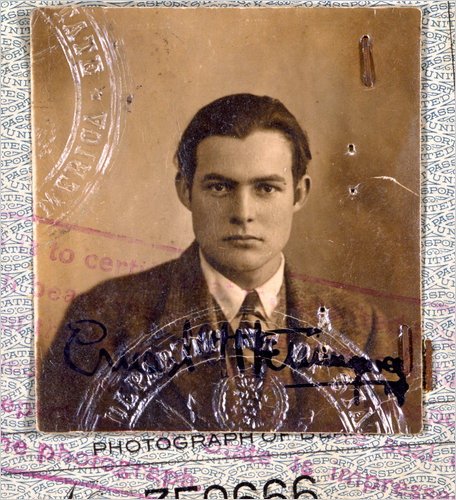Ernest Hemingway 1923 passport photo, John F. Kennedy Presidential Library and Museum
This book contains some marvelous stories, including, in The First Forty-nine, a run of several that, by themselves, earn the collection four stars and support all the claims about Hemingway’s mastery of the short story form. Among these stellar stories are “In Another Country” (a physical therapy story!), the much-anthologized “Hills Like White Elephants,” “Che Ti Dice La Patria?” (a story about La Spezia, where we started our Italian vacation in 2010!), and the lovely “Big Two-Hearted River.”
And then in Parts II and III of the collection, there are a couple stories that are so good, with such complexity and grace and beauty, that they kind of reach out past the form itself and give you the satisfaction you get from reading perfect novels. These include the heartbreaking “The Last Good Country,” the even more heartbreaking “An African Story,” which is perhaps the best story about loneliness EVER, and, to a lesser extent, but differently, the grimly comic “Landscape with Figures.” Over the course of his career, Hemingway wrote about a great many interesting things, but (almost) always, and more importantly, with the painstaking craft that he believed he owed to the subjects which had aroused his own interest.
Any complete collection will contain some dross. And in Hemingway’s case, you get a serious dose of misogyny, colonialism, and macho shoot-or-stab-anything-that-moves attitude, in some of the best stories, too. You also get some Hemingway Sex Scenes, which are the last things anybody wants to read: all the ladies are talkers, and ye gods. And in the very last story, chapters from an unfinished novel later changed and turned into a different novel, you get some seriously oogie material that make you not want to finish the book, even though you’ve come 630 pages so far. But…Hemingway’s stories at their very best are so surpassingly good that it’s worth getting through even the worst moments.
Read: August 2010
